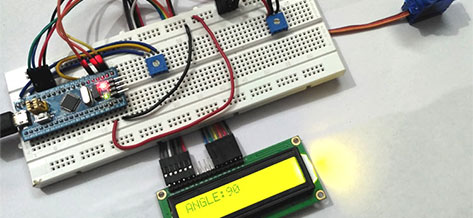- Different definitions:
(1) Brushless DC motor is a typical mechatronics product, which is composed of motor body and driver. Brushless motor refers to the motor without brush and commutator (or collector ring), also known as commutator less motor. As early as the 19th century, when the motor was born, the practical motor was the brushless form, that is, the AC squirrel cage asynchronous motor, which has been widely used. However, the asynchronous motor has many insurmountable defects, so that the development of motor technology is slow. The transistor was born in the middle of last century, so the brushless DC motor using transistor commutation circuit instead of brush and commutator came into being. This new type of brushless motor is called electronic commutation DC motor, which overcomes the defects of the first generation of brushless motor.
(2) The DC servo motor comprises a stator, a rotor core, a motor shaft, a servo motor winding commutator, a servo motor winding, a speed measuring motor winding, and a speed measuring motor commutator. The rotor core is composed of silicon steel laminations fixed on the motor shaft.
- Essential difference:
In general, the rotor pole of Brushless DC motor is made of tile type magnet, and the air gap flux density of trapezoidal wave can be obtained by magnetic circuit design. The stator winding mostly adopts concentrated full pitch winding, so the induced back EMF is also trapezoidal wave. The control of Brushless DC motor needs position information feedback, so it must have position sensor or adopt sensorless estimation technology to form an automatic speed control system. The output voltage of the inverter can be controlled according to the PWM method of the brushless DC motor. In essence, brushless DC motor is also a kind of permanent magnet synchronous motor, and its speed regulation also belongs to variable voltage and variable frequency speed regulation.
Generally speaking, AC permanent magnet synchronous servo motor has stator three-phase distributed winding and permanent magnet rotor. In terms of magnetic circuit structure and winding distribution, the waveform of induced electromotive force should be sinusoidal, and the additional stator voltage and current should also be sinusoidal. It is generally provided by AC variable voltage inverter. Permanent magnet synchronous motor (PMSM) control system often uses self-control, and also needs position feedback information. It can use vector control (field oriented control) or direct torque control.
- Square wave and sine wave control lead to different design concepts.
The so-called "DC frequency conversion" of Brushless DC motor is actually AC frequency conversion through inverter. Theoretically speaking, brushless DC motor is similar to AC permanent magnet synchronous servo motor, and should be classified as AC permanent magnet synchronous servo motor; but it is traditionally classified as DC motor, because it is called "brushless DC motor" from the perspective of its control and driving power supply and control object.



